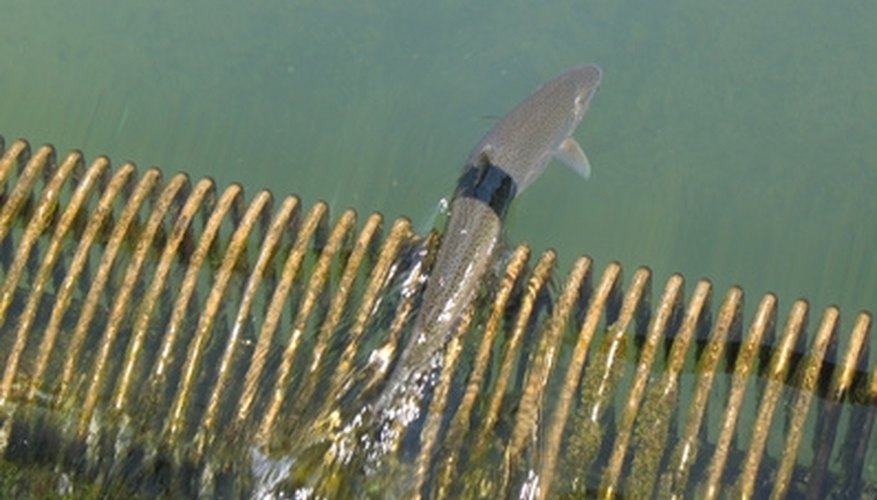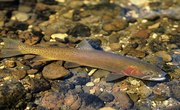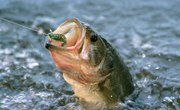
The steelhead trout looks similar to the freshwater rainbow trout, and is considered to be a saltwater version of its freshwater counterpart. Steelhead spend one to four years in freshwater, one to four years in saltwater and spawn approximately four times in their life. They are found from the Asiatic coast to southern Alaska to the Tijuana River in northern Mexico. A few observations can help you determine whether your steelhead is a male "buck" or a female "hen."
Examine the fish's jaw. Males have a longer jawline than females, which often forms a knob on the male jaw tip. The male jaw size is similar to the Pacific salmon. Male steelhead also have a convex-sloped forehead that points out at the nose, while the females' entire head flows relatively seamlessly to the tip of the nose. The head of a buck is also larger than a hen's.
Check out the male body, which is generally compressed laterally, whereas females are round, meaning bucks are narrow and tall compared to hens. Look at the fish from above or head-on to detect these nuances.
Observe the adipose fins, which can be two to three times larger on a buck. Check out their teeth. The buck has significantly longer teeth, even fangs, coming out of their mouths. If you kill the fish, you can often find eggs in females, particularly when they are spawning.
Examine other types of salmon to determine physical features among males and females. Male pink salmon grow large humps and are often referred to as humpies. Chum salmon males grow a massive hooked jaw with sharp front teeth. Many of the defining physical characteristics are common among all male and female salmon. Fish such as the chinook have more extreme versions of these characteristics, such as a massively elongated jawline.
References
Writer Bio
Phillip Woolgar has been a reporter since 2008 in communities throughout western Canada. His work has appeared in Canadian national publications such as the "Globe and Mail" and the "Vancouver Sun." In 2009, he received second-place recognition in the Alberta Weekly Newspaper Association's Excellence in Arts and Culture writing category. Woolgar graduated from the Langara College Journalism Diploma program in 2008.



